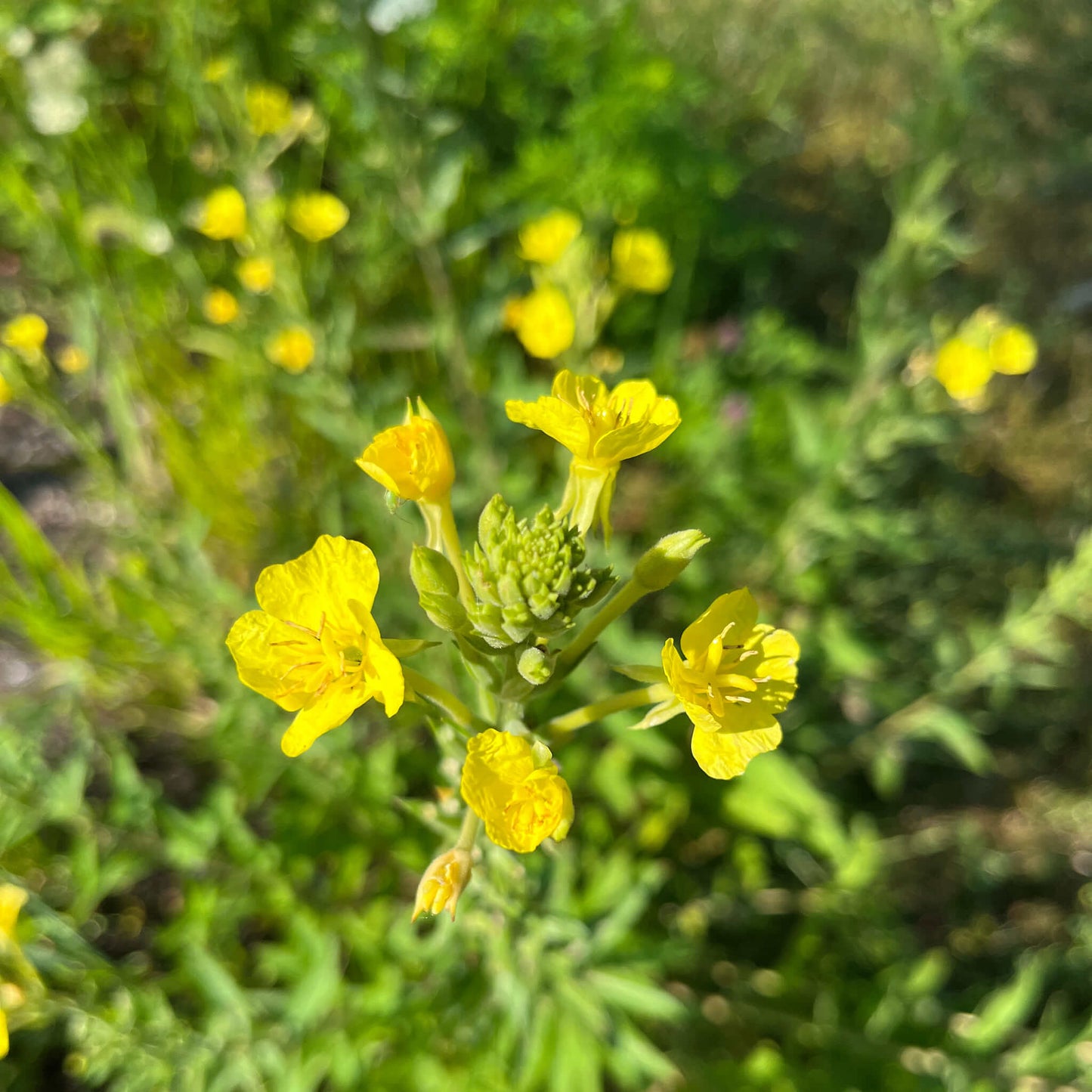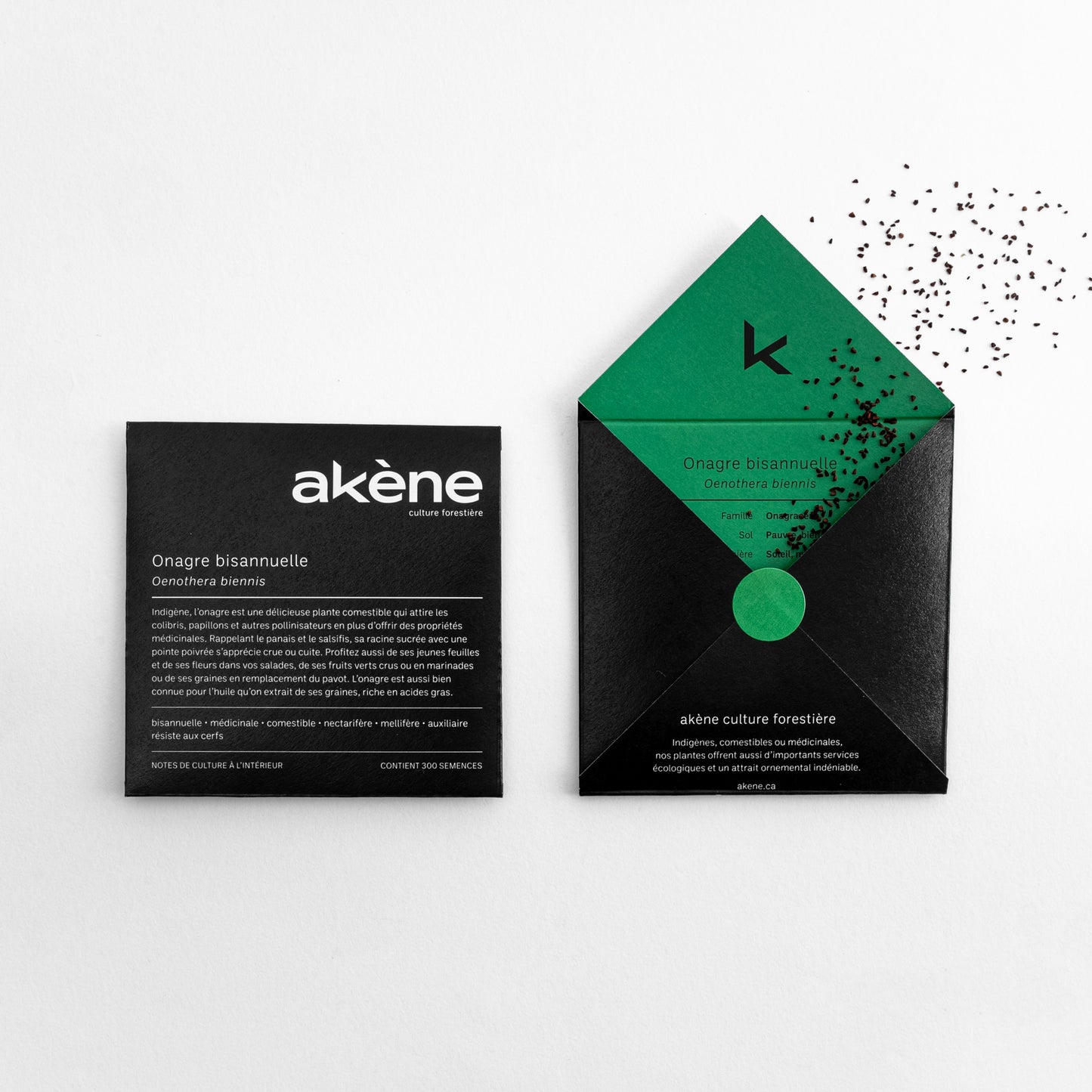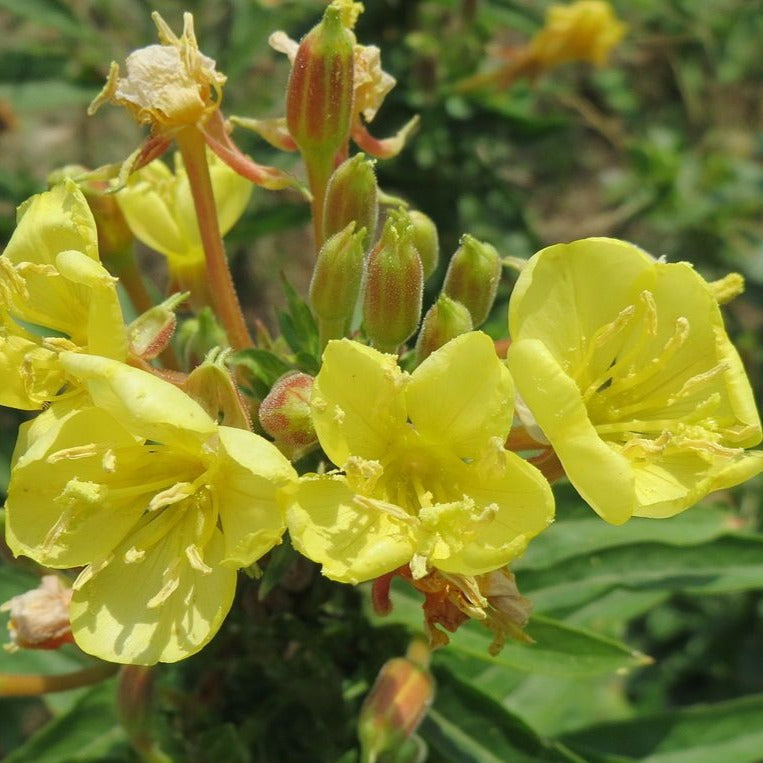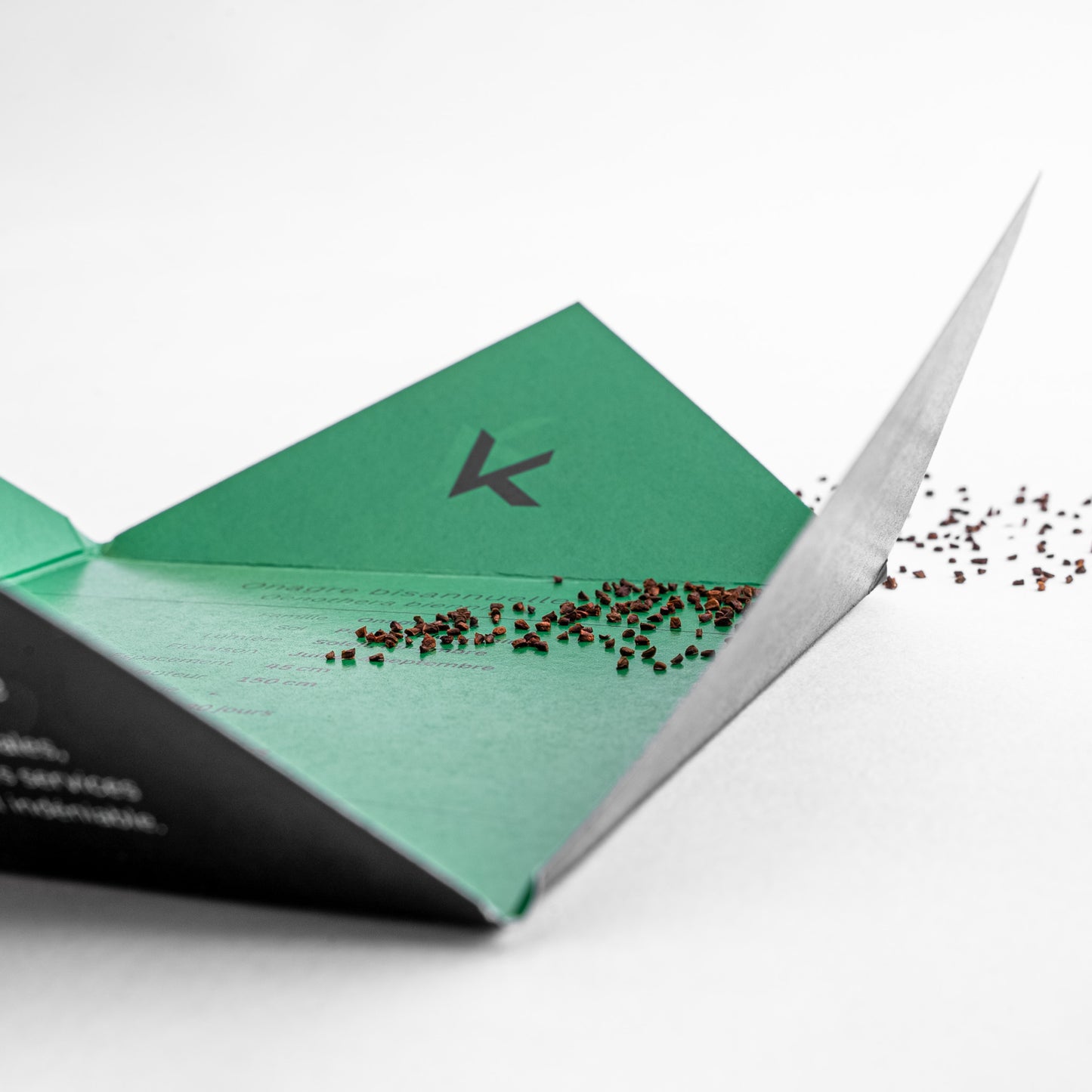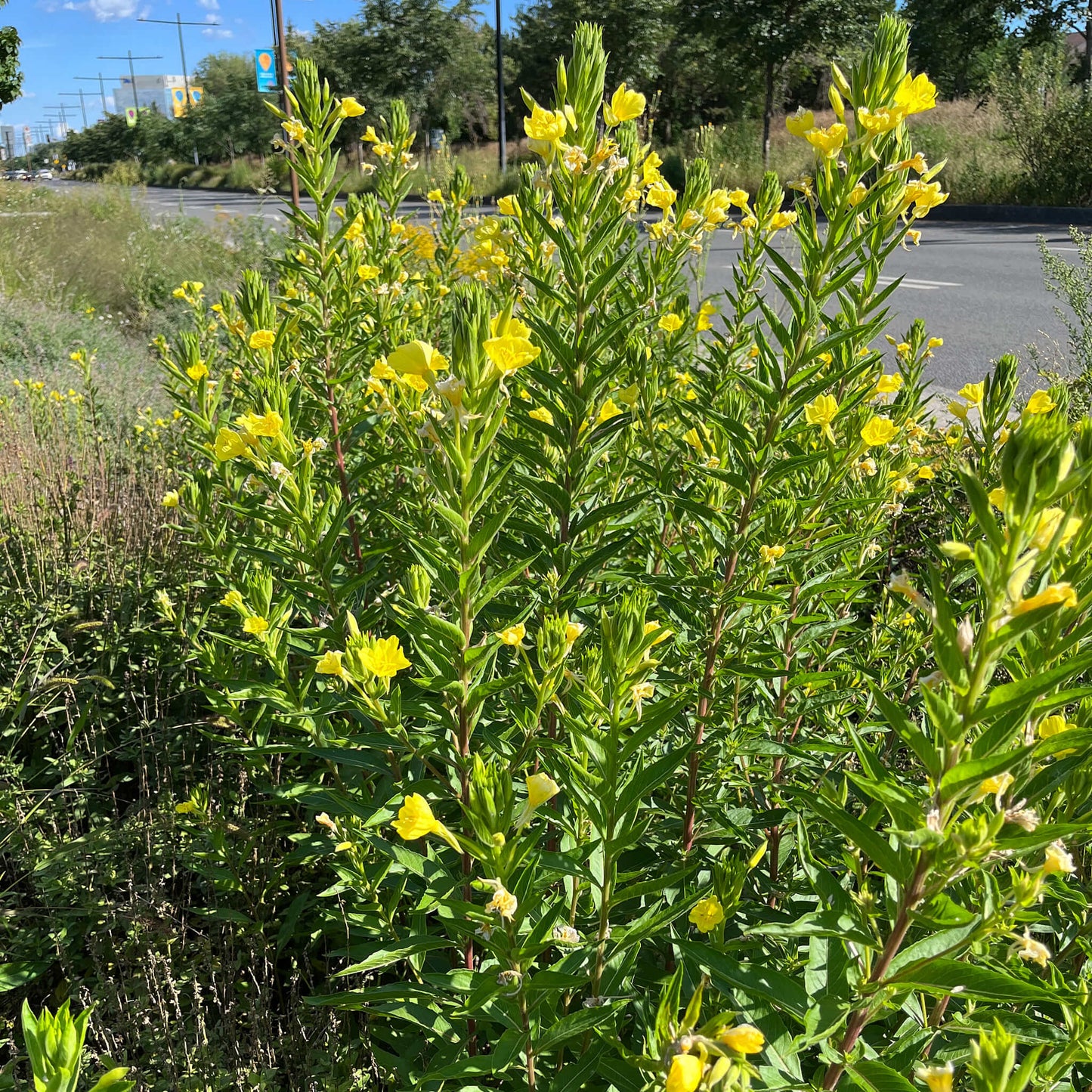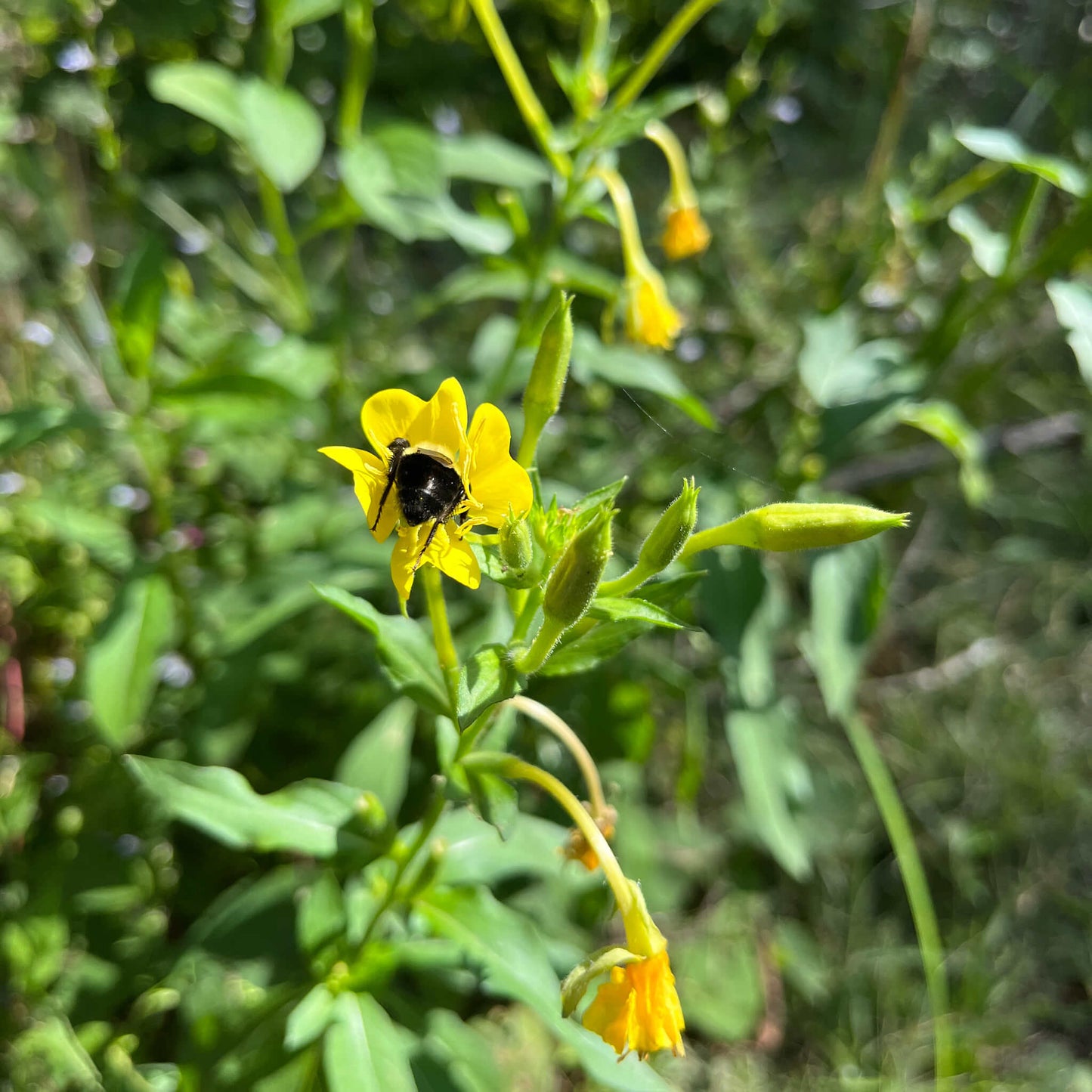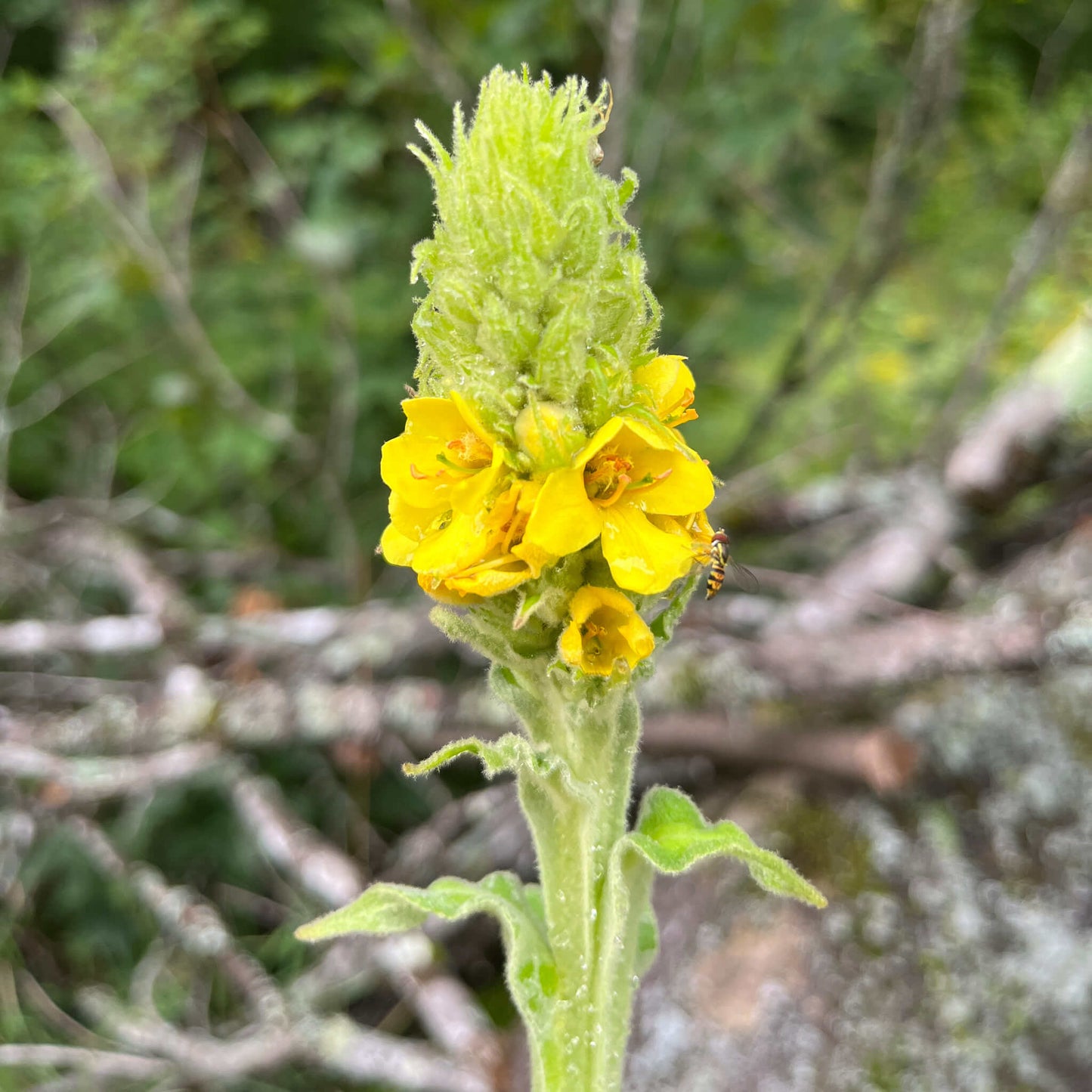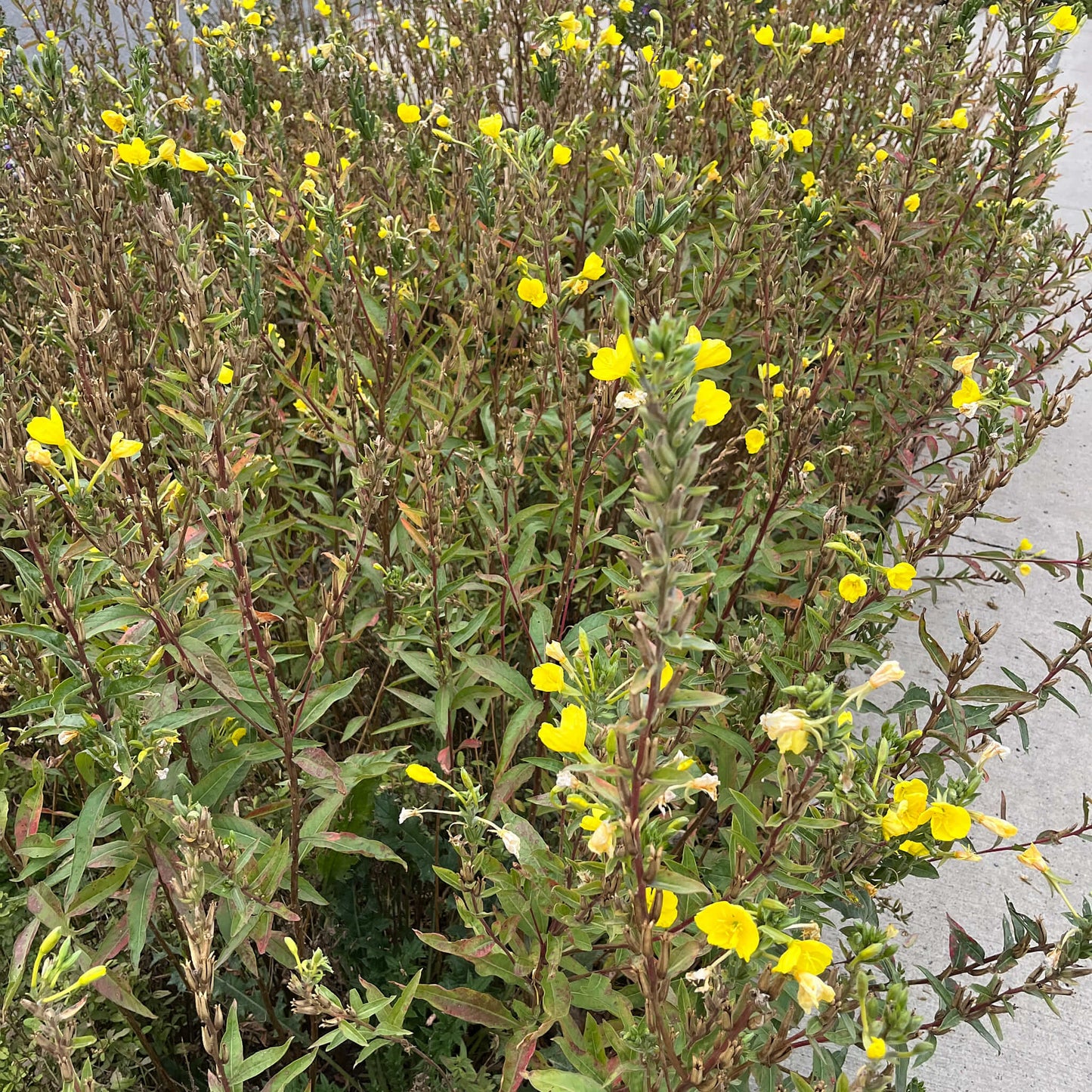For successful seedlings,
see the growing notes at the bottom of the page!
Common evening primrose (Oenothera biennis) is a beautiful North American native plant, valued for its many culinary and medicinal uses. This biennial produces large yellow flowers that open in the late afternoon and remain open through the night, releasing a delicate fragrance. This nocturnal blooming provides a valuable food source for moths, while also attracting hummingbirds, butterflies, and other pollinators during the day. This plant can reach heights of 1 to 1.5 metres and self-seeds abundantly, allowing it to grow year after year, providing edible roots, leaves, flowers, and seeds.
Medicinal and Culinary Uses
The roots, leaves, flowers, and seeds are anti-inflammatory, astringent, and mildly analgesic. The sweet, peppery root of the first-year plant, similar to parsnip or salsify, can be eaten raw or cooked. Young leaves and flowers add a delicate touch to salads, while green seed pods can be eaten raw or pickled. The seeds can also be used as a substitute for poppy seeds. The oil extracted from evening primrose seeds is rich in gamma-linolenic acid and linoleic acid, two omega-6 fatty acids beneficial for skin health and reducing inflammation.
Ecological Roles
Evening primrose plays an essential ecological role by providing nectar for nocturnal pollinators, especially moths, which often have limited resources in gardens. The plant’s nighttime bloom and fragrance also attract hummingbirds and daytime butterflies. As it self-seeds, it forms colonies that support local biodiversity and offer a sustainable food source for insects. Its ability to thrive in various soil types, including poor soils, makes it an excellent choice for ecological and naturalistic gardens.
Evening primrose seeds require cold stratification to ensure germination. See the cultivation notes below for more details.
Akène cannot assume any responsibility for the use of plants for therapeutic purposes. Always seek advice from a professional before using a medicinal or edible plant.
Sowing and Growing
Technical Details
Seeds per packet: 300
Family: Onagraceae
Scientific name: Oenothera biennis
Life cycle: Self-seeding biennial
Hardiness zone: 2
Soil type: Sandy to loamy
Soil moisture level: Dry to medium
Soil - additional attributes: Well-drained, poor
Light: Sun, part shade
Blooming: July to September
Spacing: 45 cm
Height: 150 cm
Deer resistance: High
Stratification: 30 days
Scarification: No
Germination time: 15 to 30 days
Sowing depth: Surface


